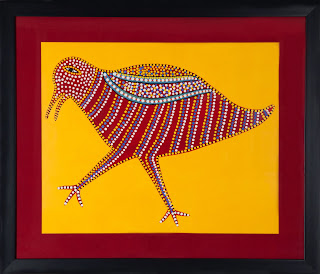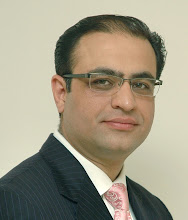Dear Friends,
Well, after a successful opening of The Oberoi, Gurgaon which opened in April and kept me busy for the last 6-8 months, I am back on the art scene with even more enthusiasm.
The hotel has already made into the the nominations for "Hotels to watch out for" for the World's best new hotel awards to be announced in Las Vegas in August.
In these 6 months absence from the art scene, bestcollegeart.com an art initiative supported by me has grown from strength to strength and now sold over 200 works in 10 months.
The aim for the initiative was to remove two key bottlenecks in collecting contemporary art which was price and access, so price was a key point and access was that you look at the work in high resolution from over 700 artists and have the work shipped to your home.
The idea was to have people collect art and even gift it to each other, anything that increases the collector base in this country!
So here we are, celebrating the first anniversary of Bestcollegeart.com with my first show as a curator and opening at one of India's most prominent art galleries "Nature Morte" called Collective Metamorphosis which opened on the 23rd of July at 7 PM.
Some details of the show and my opening notes for all the readers of this blog, please do visit the show as the show is on till 1st of August, everyday from 11 AM to 6 PM except Sundays.......
I am a collector but not a curator!
I start with this line as it reflects the philosophy behind this show. I am a collector, I love Indian Contemporary Art and believe it has enriched me in more ways than one. I am not a curator but deeply concerned with what is happening in the world of Indian Contemporary Art.
I believe we need to make art more accessible both in terms of price and ease of access. This will not only encourage artists but also attract many more individuals to engage and collect art.
This was one of the key reasons for establishing Bestcollegeart.com, an art initiative in which we gave an opportunity to every artist to load his best 5 works and sell to collectors. Today with over 700 works loaded and over 180 artists, Best collegeart.com is India's largest art initiative and has sold over 200 works in its 10 months since inception. All works expire in 6 months so the content is always fresh and you can buy online to have it delivered to your home.
Peter Nagy gave the initiative a head start last year when he curated the opening exhibition "The Present is Now" which opened to rave reviews.
"Collective Metamorphosis" was a title which took a long time for me to decide. Finally, I titled it so because I knew all the artists displaying in this show for over a year. We had spoken to each other, discussed the inspiration behind the works, their personal motivation, agreed and disagreed on many points in this journey. In this entire interaction, we contributed to each other's learning and enriched ourselves as artists and a collector. Collective Metamorphosis is our journey through the trials and tribulations of Indian Contemporary Art and our take on the art that you will see.
My only brief to all the artists was to do what they do best and not confine them with a theme, as a theme can sometimes restrict. I believe that when 5 distinct individuals with their own unique approach to art will present the works of passion that they have created, there will be a linkage which will then come through on its own.
Paribartana Mohanty was first seen in a major show at Bestcollegeart.com where his Oil on canvas works were picked up by collectors even before the show started. Paribartana picks up his characters from people around us and then presents his own interpretation of them. The characters come out from the canvas with hues of black and dark shades in the background. The oil on canvas works are powerful, well executed and haunting in their own way, never fading from your memory.

Deepjyoti Kalita epitomises the influence of Baroda school of art to me, challenging the boundaries and pushing the envelope with each work. He does wall mounted installations and kinetic works, so each work has significant movement and the effect on the viewer is much more than a static painting. His characters are generally caught up with a choice that they need to make in life. The works always create a disbelief when they are viewed by collectors as he tends to surprise with lighting and kinetics.

Kumar Kanti Sen quit a lucrative job heading the design function for a top company and followed his passion for art. He is one of the most passionate and committed artists I have seen and someone who experiments continuously with all the mediums. His paper works are vibrant, have a flaming intensity and draw you towards them. I have always felt a certain energy in his works and in parts I feel like the characters he draws so meticulously are on fire.

Gopal Samantray has a take on the rapid urbanisation where cities are now expanding beyond the boundaries and infringing on forests and living spaces of animals. In his works, the animals come into urban spaces as their natural habitats are eroded by urban spaces. He paints a satirical image of leopards and tigers coming out of the forests and into our homes for no fault of theirs.

Tauseef Khan has worked his way up, installing some of the best shows for some of the biggest names in the world of Indian Contemporary art and still not losing that fire within to paint a new landscape. He paints images of Delhi's monuments and gardens seen through a wine glass, a comment on how we view our culture and heritage. The approach to his works is refreshing and the paintings are distinctive.

I am just a collector and someone who appreciates the finer things in life which includes working for The Oberoi Group. I have learnt a lot in my journey through the world of Indian Contemporary Art and enjoyed putting this together.
I hope you enjoy viewing this show at Nature Morte till 1st August or online at bestcollegeart.com.
Cheers
Kapil
Kapil Chopra is Senior Vice President of Oberoi Hotels & Resorts.He writes a blog on collecting in Indian Contemporary Art at www.indianartinvest.blogspot.com.He also writes for The Telegraph Newspaper in the Sunday magazine " Graphiti" every fortnight. In Delhi, he writes for "The Mail Today " Newspaper and the "First City" Magazine.















































